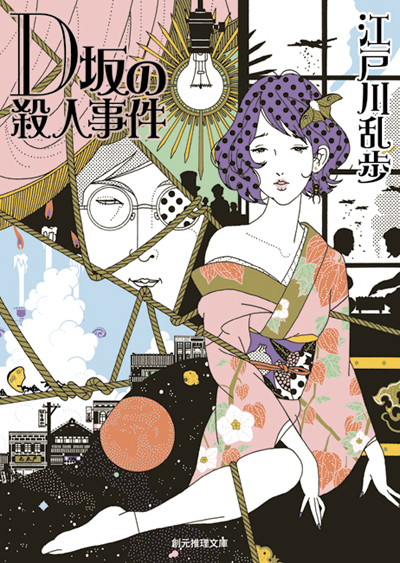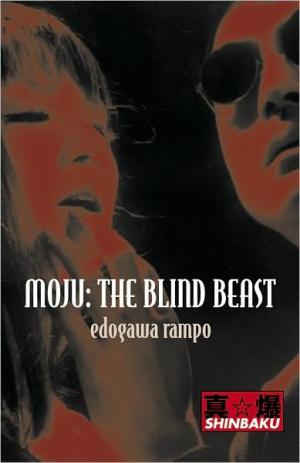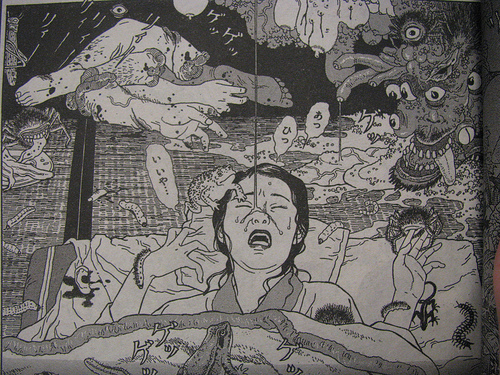Discussions of Japanese detective fiction, especially those concerning the pre-World War II period, will inevitably mention the name Edogawa Rampo. Essayists will mention how he was the first full-time modern crime writer in Japan, and how he’s considered the father of the Japanese detective story. They will also mention how Hirai Tarō’spen name, Edogawa Rampo, which literally means “chaotic steps along the river Edo”, is actually a clever Japanese play on Edgar Allan Poe (try reading it out loud!) Writers will, in short, emphasize the long shadow he casts over the period, and that is well-deserved praise. The tale of early detective fiction in Japan is very much the tale of Edogawa Rampo.

(An inverted detective story shows the actual crime first, usually in detail and also showing the identity of the culprit. The second part shows how the detective tries to solve the crime. Because the viewer/reader already knows who did it and how, the focus lies on how the detective is going to catch the culprit. A famous example would be the TV-show Columbo.)
Edogawa Rampo would prove to be a very prolific writer. Amongst his creations are a gentleman-detective, Akechi Kogorou, and a thief, the Fiend with 20 Faces. Edogawa Rampo would also write detective novels for children, notably his Boys Detective Club series, where the titular Boys Detective Club, a Japanese take on Holmes’ Baker Street Irregulars, would fight against master-criminals. Edogawa would also be a prolific critic of the genre, reading novels from all over the world and publishing reviews and essays. Thus he expanded his strong influence over the development of the genre in Japan.
But while he remained a passionate fan of fair-play mysteries, like those of Americans S.S. Van Dine and Ellery Queen, his own stories would actually move away from that traditional model. Edogawa Rampo’s horror-stories, like “The Human Chair”(“Ningen Isu”), proved to be more popular than his “normal” detective stories. In response to that, Edogawa Rampo would add more and more elements of horror and eroticism, leading up to the split into orthodox and unorthodox schools of detective writing in Japan. The “orthodox school” would come to refer to the classic fair-play mysteries, while the “unorthodox school” didn’t follow these conventions.
 Subjects in “unorthodox” detective novels might, for example, include a mad scientist or the expression of fearfulness toward futuristic science. These novels are very much the products of their time, the roaring ‘20s, when Japan was quickly modernizing after the first World War. (Other writers in this school are Yumeno Kyusaku and Unno Juza.) These unorthodox works are strongly connected to the contemporaneous “Ero-Guro-Nonsense”(Erotic, Grotesque, Nonsense) literarymovement in 1920s Japan. Nowadays, mistaken as a term to refer to pure pornography or gore, Ero-Guro-Nonsense was actually a movement that focused on exploring eroticism, sexual corruption, deviance, and decadence within a social context. For example, Edogawa’s seralized novella, Blind Beast (Moju), tells the story of a blind sculptor who kidnaps and kills female models, leaving their dismembered limbs all over city.
Subjects in “unorthodox” detective novels might, for example, include a mad scientist or the expression of fearfulness toward futuristic science. These novels are very much the products of their time, the roaring ‘20s, when Japan was quickly modernizing after the first World War. (Other writers in this school are Yumeno Kyusaku and Unno Juza.) These unorthodox works are strongly connected to the contemporaneous “Ero-Guro-Nonsense”(Erotic, Grotesque, Nonsense) literarymovement in 1920s Japan. Nowadays, mistaken as a term to refer to pure pornography or gore, Ero-Guro-Nonsense was actually a movement that focused on exploring eroticism, sexual corruption, deviance, and decadence within a social context. For example, Edogawa’s seralized novella, Blind Beast (Moju), tells the story of a blind sculptor who kidnaps and kills female models, leaving their dismembered limbs all over city.
The mainstream’s return to “orthodox “detective writings, without Ero-Guro-Nonsense, would not occur until after the Second World War. By that time, Edogawa Rampo had stopped writing novels, concentrating mostly on his essays and study of the genre. He died in 1965. But he can never be forgotten.

Edogawa’s works have often been and continue to be adapted for movies and TV series. Recent productions inclue 2008’s K-20: Legend of the Mask and 2010’s Caterpillar, both based on his works. Comics are still being produced directly from his works, while a lot of fiction references him in a more oblique way. The protagonist of the comic Detective Conan, for example, works under the name Edogawa Conan. As a sarcastic reference to the old master, the people responsible for 1984’s unsolved Glico-Morinaga blackmailing case, signed their threats as “The Fiend with 21 Faces,” a twisted nod to Edogawa Rampo’s creation.
Edogawa Rampo, as both writer and critic, must be said to be the most formative figure in the history of Japanese detective fiction. His works, from early traditional detective stories to his later unorthodox writings, from his essays to his memoirs, depict how the Japanese mystery, and Japanese society itself, developed from the 1920’s up to the post-war period.
Works by Edogawa Rampo available in English:
Japanese Tales of Mystery and Imagination—Tuttle Publishing (Includes “The Psychological Test” and “The Human Chair” among others)
The Black Lizard/Beast in the Shadow—Kurodahan Press
The Edogawa Rampo Reader—Kurodahan Press (Includes “The Stalker in the Attic” and essays)
Moju: The Blind Beast—Shinbaku Books
“The Two-Sen Copper Coin”, “The Man Traveling with the Brocade Portrait”, “The Caterpillar” in: Modanizumu: Modernist Fiction from Japan 1913-1938 (University of Hawai'i Press)
Literature on early Japanese detective fiction, including Edogawa Rampo:
Sari Kawana (2008). Murder Most Modern: Detective Fiction and Japanese Culture (University of Minnesota Press)
Mark Silver (2008). Purloined Letters: Cultural Borrowing and Japanese Crime Literature, 1868-1937 (University of Hawai'i Press)
CrunchyRoll Detective Conan info/watch
Caterpillar Comic Image from All About Comics Blog
Ho-Ling Wong blogs at Ho-Ling no Jikenbo

Thanks — I’d never heard of Rampo. Fascinating article.
Great article! I went to see the film adaptation of Caterpillar as part of Japan Society’s Empire of the Rising Sun film series. It is a brilliant artistic critique and gave valuable historical insight into national trauma in Japan during World War 2 (which often gets buried in Japanese military history propaganda to this day.)
Thank you for this great introduction. Adding him to my “to buy” list.
Thnaks for Shaering it
Thnaks for Shaering it
Thnaks for Shaering it
Thnaks for Shaering it
Thnaks for Shaering it
Thnaks for Shaering it